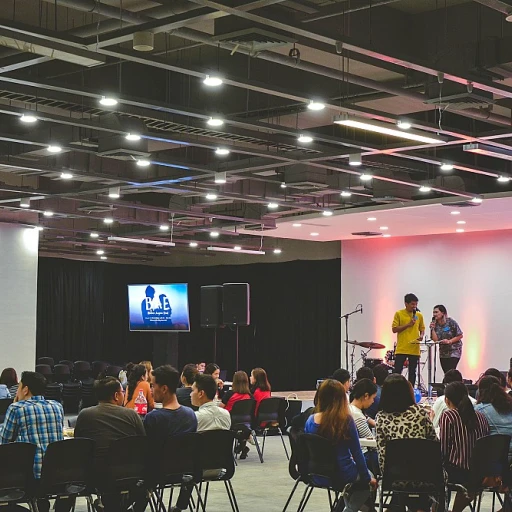
Understanding Backfilling and Its Importance
Grasping the Essentials of Role Replacement
The concept of backfilling is vital for ensuring seamless business operations whenever an employee leaves their role, temporarily or permanently. In essence, the backfill process involves identifying and hiring suitable candidates to take over the vacated responsibilities, either until the original job holder returns, or permanently. Understanding the importance of effectively managing this process is key. An unexpected departure can swiftly disrupt productivity, affect team dynamics and morale, and create a gap in crucial skills which, if not addressed promptly with a strategic backfill plan, can lead to longer-term challenges for the organization. Successful backfilling goes beyond mere replacement. Hiring managers should be well-versed with the job description of the vacant position and consider the potential internal candidates who already possess the relevant skills and knowledge. This internal perspective can be pivotal, offering advantages such as reduced onboarding time and better cultural fit within the team. Strategically, backfilling should be part of comprehensive workforce planning, incorporating best practices for identifying potential gaps and planning for smooth transitions. This is where succession planning becomes essential, ensuring that there is always a pipeline of talent ready to step into roles as they become available. Moreover, relying solely on external recruits for backfilling positions can be a costly and time-consuming decision. By developing a robust backfill strategy, organizations can leverage the skills of their current employees, fostering internal growth and retention. Thus, understanding the nuances of backfilling is not just about finding a quick fix but ensuring long-term stability and enhancing overall consistency in the hiring process.Impact on Employer Branding
How Backfilling Influences Employer Branding
Backfilling a position is not just a logistical necessity; it plays a crucial role in shaping an organization's employer branding. The way an organization handles the backfill process can significantly impact its reputation among current employees, potential candidates, and even clients. Here’s how:
- Perception of Stability: When a company efficiently manages the backfilling of roles, it sends a message of stability and reliability. Employees and candidates perceive the organization as one that values continuity and is prepared for workforce changes.
- Internal Morale: A smooth backfill process can boost morale among team members. When employees see that their organization has a clear plan for replacing employees who leave, it reassures them of the company’s commitment to maintaining a supportive work environment.
- External Reputation: The way a company handles backfilling positions can affect its external reputation. Candidates often look for signs of how an organization manages transitions and whether it has a robust succession planning strategy in place.
- Communication and Transparency: Effective communication during the backfill process enhances trust. Keeping employees informed about the hiring process and any changes in team dynamics can prevent uncertainty and foster a positive organizational culture.
For more insights on maintaining consistency in hiring and its impact on employer branding, consider exploring structured processes in hiring.
Strategies for Effective Backfilling
Effective Techniques to Streamline Backfilling
Backfilling effectively requires a delicate balance of quick action and strategic thinking. To help ensure success, consider the following approaches:- Comprehensive Workforce Planning: Thorough workforce planning is essential to address potential gaps swiftly. This involves understanding your organization’s current staffing situation and future needs. It ensures a smooth transition when an employee leaves the team, mitigating disruptions.
- Internal Candidate Evaluation: Leveraging internal candidates is often a time-efficient way to fill vacant positions. Existing team members already understand the company culture and possess relevant skills for the role. Identifying promising employees for potential promotion aids in reducing hiring time and cost, thus supporting a robust backfill strategy.
- Effective Job Description and Role Definition: Clearly defining the responsibilities and expectations for the position is crucial. Well-crafted job descriptions attract suitable candidates more efficiently. Consider reviewing and updating them regularly to align with evolving roles.
- Succession Planning: Incorporating succession planning into your organization helps prepare internal candidates in advance. This includes training employees for potential future roles, ensuring a capable internal pool when a backfilling position becomes necessary.
- Proactive Talent Acquisition: Having a proactive approach to hiring helps maintain a pool of qualified candidates. Build and nurture relationships with potential talent, so when a backfill position arises, you have access to a ready network. Creating partnerships and engaging in networking events can enhance your talent pool.
Challenges in Backfilling a Position
Identifying the Core Challenges in Backfilling
Backfilling a position is not without its hurdles. Organizations often face a myriad of challenges when attempting to fill a vacant position, especially when the role is critical to the team’s success. Understanding these challenges is crucial for developing an effective backfill strategy.
Timing and Urgency
One of the primary challenges in the backfill process is timing. When an employee leaves, the urgency to fill the role can lead to hasty decisions. This urgency can compromise the quality of the hire, as hiring managers might prioritize speed over finding the right fit. This can affect the long-term success of the new hire and the overall team dynamics.
Internal vs. External Candidates
Deciding whether to promote internal candidates or seek external talent is another significant challenge. While internal candidates are familiar with the organization’s culture and processes, they may lack the fresh perspective that external candidates bring. Balancing these considerations requires careful workforce planning and a clear understanding of the job description and required skills.
Maintaining Team Morale
The departure of a team member can impact the morale of current employees. The uncertainty of a vacant position can lead to increased workloads and stress among team members. It is essential to communicate effectively with the team during this transition to maintain morale and ensure a smooth backfill process.
Skill Gaps and Training
Identifying and addressing skill gaps is another challenge in backfilling positions. The new hire may require training to reach the desired level of proficiency, which can be time-consuming and resource-intensive. Organizations need to invest in training and development to ensure the new employee can perform effectively in their role.
Aligning with Organizational Goals
Finally, aligning the backfill strategy with the organization’s long-term goals is crucial. Succession planning and a well-thought-out backfill plan can help ensure that the new hire supports the organization’s objectives and contributes positively to the team’s success.













